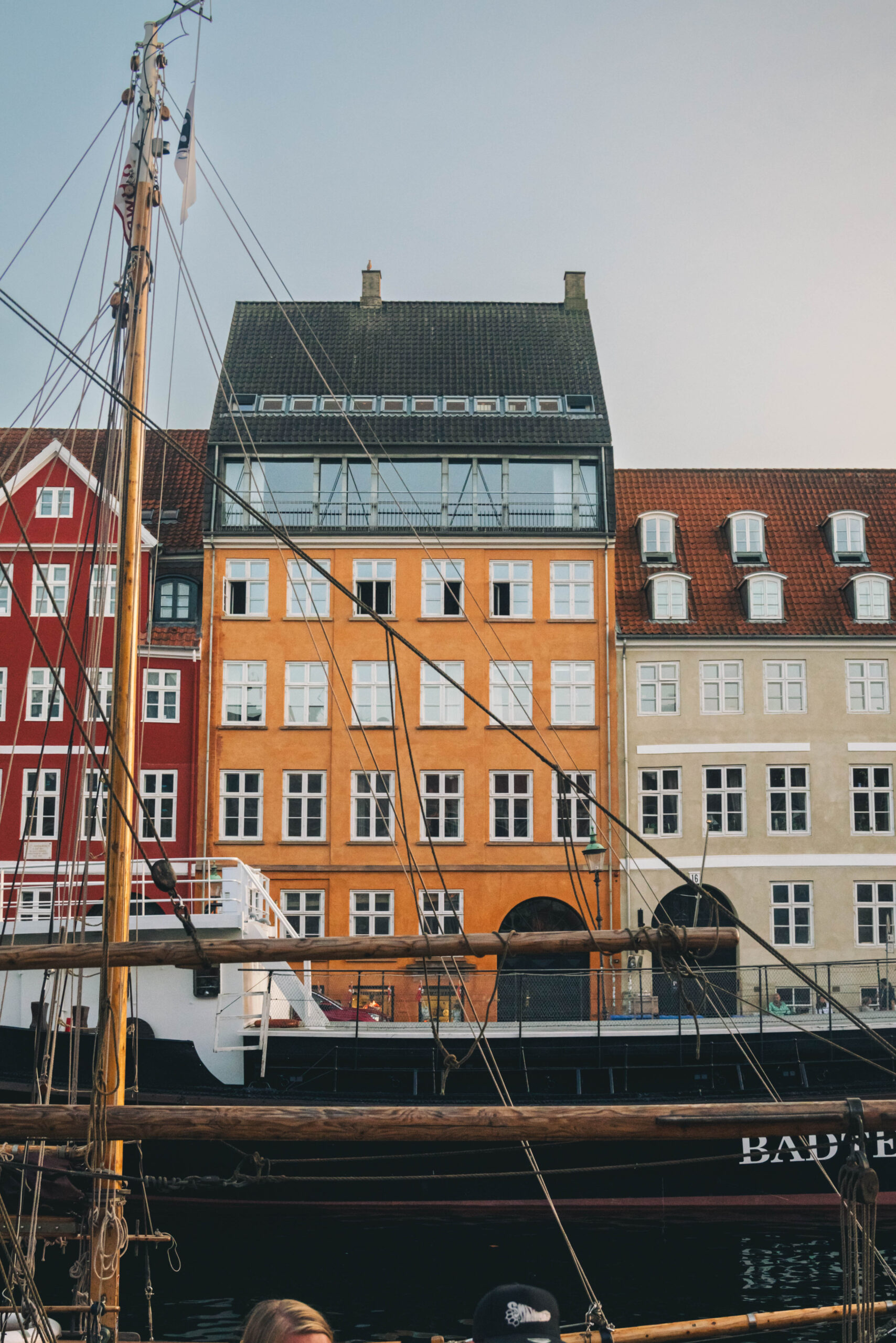Just a few days after signing the historic deal to cut DenmarkÂ’s early retirement programme and raise the retirement age, it remains to be seen how the past weeksÂ’ dramatic power shuffle will play out.
At the centre of the drama stood the Social Liberals, the little party whose Danish name, ‘Det Radikale Venstre’, directly translates as ‘the radical left’. For many generations the Social Liberals have wielded a bigger influence on the nation’s political destiny than its share of voters would warrant.
In truth, the party is neither left nor right, which is the reason for its unusual power position – one which last week gifted the centre-right and punished the Social Democrat-led opposition in what was just the latest episode of the drama from Christiansborg, the seat of the nation’s government.
Social Liberal leader Margrethe Vestager, summed up the paradox of her party in her blog on the website of Politiken newspaper on the evening after the announcement of the deal that she and co-chairman Morten Østergaard helped make happen.
“We made an agreement on retirement reforms with the Liberal-Conservative government and the Danish People’s Party. And we are endorsing [Social Democrat] Helle Thorning to be the next prime minister. It is neither red nor blue. It is radical.”
In other words, the 106-year-old party that has positioned itself in the centre – with an emphasis on de-centralisation, balanced budgets and local democracy – has never been tied to either the left or the right. Instead, it has switched teams throughout its history depending upon its own objectives.
Their platform continues to be defined by budget balancing and decentralisation, with an additional emphasis on more open immigration laws to encourage internationalism in the Danish business and job markets, and continued investment in education, including the SU student stipend programme that the Liberal-Conservative government also plans to cut as part of the 2020 budget reform plan.
Almost exactly 100 years ago, the Social Liberals ruled as a single-party government from 1909-1910 and from 1913-1920, with the Social Democrats as its main ally.
In the decades following, the party was the junior partner in Social Democrat-led governments. But from 1968-1971 and 1988-1990 it was also a part of Conservative-led governments.
The Social Liberals have experienced internal shake-ups in recent years, as factions of the party split to left and right over shades of policy differences.
In the 2005 general election, the party made stunning gains, winning eight seats in parliament and nearly doubling its number of MPs from nine to 17. The victory reflected a defection of voters from the Social Democrats, largely based on rising voter interest in balanced budgets and more open immigration policies, according to Aalborg University professor and civics expert Johannes Andersen.
But when the party tried in 2006 to capitalise on the victory by announcing it would no longer play the role of junior partner to a party on the left or right, but would pursue its own political aims – a strategy it called “The other way” – it ended up losing everything it had gained the year before.
Weekendavisen political journalist Arne Hardis described the party in this way: “A closer analysis of the Social Liberal spirit [reveals] a [Georg] Brandesian-rooted self-esteem, which their historic position as a much-courted centre party and kingmakers for 100 years has turned into an integrated feature of the party’s political culture. In polemic short-form: the Social Liberal’s politics are so intelligent that it would be a shame to let it go to waste just because it does not have any supporters.”
However, in a country like Denmark, where the strains of the credo of humility known as the Jante Law are still strong, having untouchable self-esteem and being “so intelligent” that one feels justified in unilaterally pursuing one’s own goals without regard for the group or bloc is not necessarily seen as a strength. In fact, it could be the Social Liberal’s Achilles’ heel and perhaps the reason why the party has stayed small, despite its influence.
Internal splits after the failure of ‘The other way’ in 2006 resulted in the defections of MP Naser Khader and MEP Anders Samuelsen, who created the New Alliance party. The New Alliance, now known as the Liberal Alliance, allied itself with the Liberal-Conservative government, while the Social Liberals affirmed their support for the Social Democrats.
Around the same time, Margrethe Vestager, who had been education minister from 1998-2001 and church minister from 1998-2000 in Social Democrat-led governments, became party leader.
In the weeks preceding last week’s retirement reform deal, Vestager was accused of “splitting the opposition” and marginalising the entire economic plan on which Thorning-Schmidt’s election campaign hinges by pursuing Social Liberal economic goals even though it meant breaking faith with the Social Democrats as the parties are positioning themselves for an impending general election.
But the Social Liberals have always been clear about their economic goal of ending the efterløn early retirement programme, and that single-mindedness – independent of political alliances – is what the Liberal-Conservative government and prime minister Lars Løkke Rasmussen capitalised on last week. It is also what the Social-Democrats and Thorning-Schmidt apparently underestimated – a strategic mistake that several of the party’s ministers said could come back to haunt her should the Social Democrats win the election.
“In the 30 to 40 years that I have been politically active, the Social Democrats have not been able to get anything accomplished, without having the Social Liberals on their side,” former Social Democrat interior minister Thorkild Simonsen told Politiken newspaper.
Ritt Bjerregaard, another former Social Democrat cabinet member, agreed that Thorning-Schmidt had mishandled the early retirement negotiations.
“I don’t think it was smart, for there certainly aren’t any polls that show a liberal majority without the Social Liberals. As a leader, you can’t have a policy that a majority doesn’t support,” Bjerregaard told Politiken.
In contrast, the wooing of the Social Liberals and the sealing of the retirement reform deal showed Rasmussen to be a more able politician than his weak approval ratings would suggest.
Weekendavisen’s Hardis described the centrist Social Liberals as a genie that had been trapped in a bottle for several years, unable to wield its power, until Rasmussen “rubbed on the lamp” by announcing that cutting early retirement would be a central feature of his ten-year budget plan – the so-called 2020 budget reform.
Before Rasmussen’s announcement, Hardis explained, the issue of cutting early retirement was “a curiosity” on the radar only of the Social Liberals and a few members of the Conservative and Liberal Alliance parties.
When Rasmussen made it a key element of his 2020 budget reform – and then got Pia Kjærsgaard of the populist Danish People’s Party to open up to the idea – the ‘genie’ was out of the bottle. It was a great temptation, if not an inevitability, that Vestager and the Social Liberals would “split the opposition” when the opportunity for achieving retirement reforms arose.
If Rasmusen was betting on that probability and playing Vestager and her team into his hand, it was a subtle and effective political move – and one that apparently went right over Thorning-Schmidt’s head, when she decided to dig in her heels and walk out of the budget negotiations.
Thorning-Schmidt – and Villy Sovndal, the leader of the opposition’s second largest party, the Socialist People’s Party – were betting on the probability that voters would stand up and shout down an attempt by the government to end early retirement.
That rejection from voters, however, did not materialise after the deal was struck on Friday. On the contrary, a Gallup poll taken over the weekend showed that more voters look positively on the reform than are against it and the oppositionÂ’s lead in the polls had shrunk.
What is clear to many political commentators is that Rasmussen has won a coup by stirring up the Social Liberals with one of their key issues and getting Denmark’s historic ‘kingmakers’ to bless his economic plan in the lead-up to the election.











